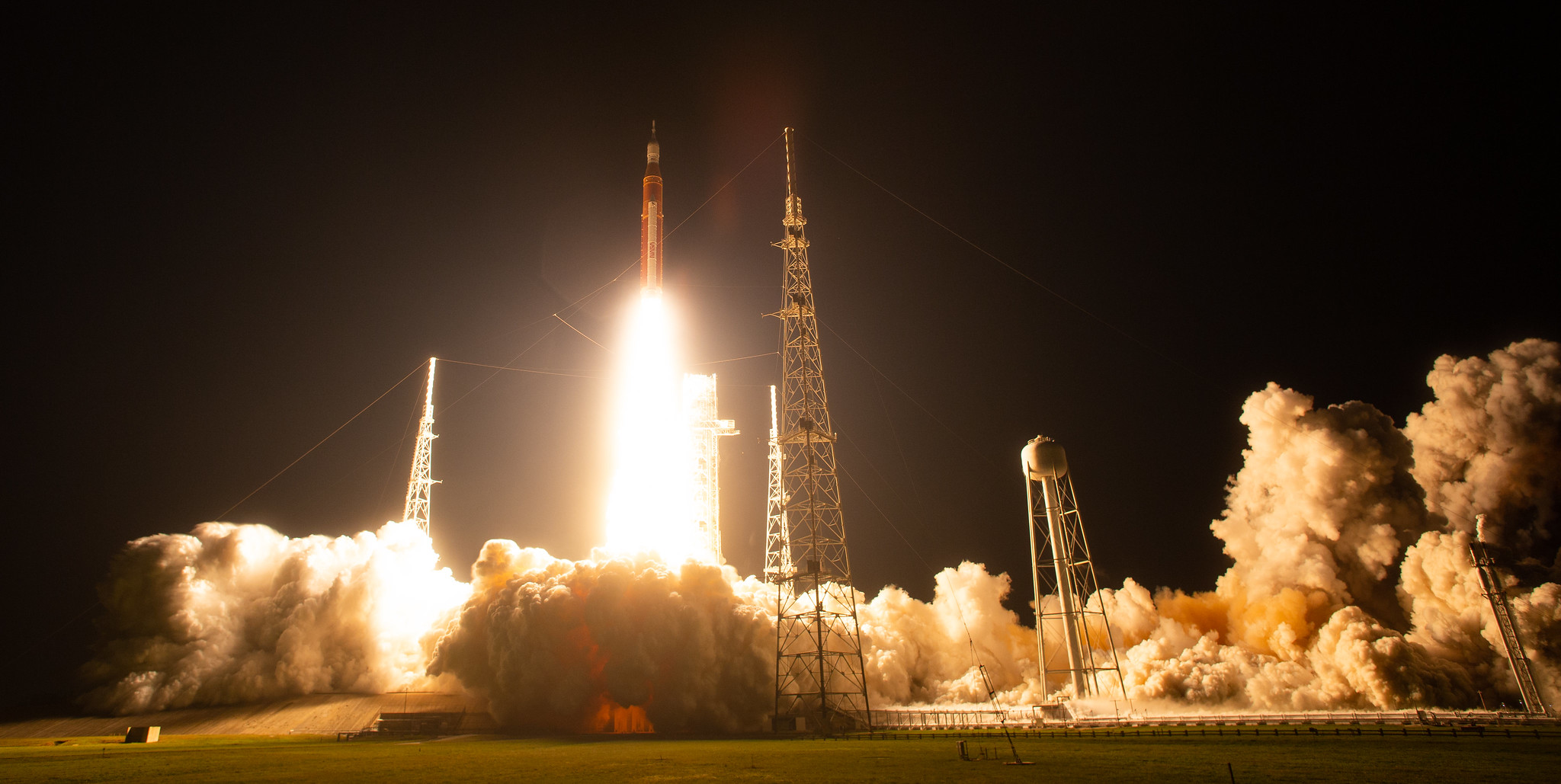

NASA’s Space Launch System rocket carrying the Orion spacecraft launches on the Artemis I flight test, Wednesday, Nov. 16, 2022. Credit: NASA/Joel Kowsky
NASA just released a new supercut of high-resolution video from the Artemis I launch on November 16, 2022. Much of the footage is from cameras attached to the rocket itself, allowing everyone to ride along from engine ignition to the separation of the Orion capsule as it begins its journey to the Moon.
A few highlights:
We first see the rocket on the pad, with NASA pointing out various parts of the Space Launch System. The music swells, anticipation builds
Then the big thrill: seeing the launch from various vantage points, including the rocket itself. Billed as the most powerful rocket in the world, SLS rocks and shakes the ground and the cameras. The killer view comes at about 18 second in: the same view of the liftoff as those iconic Apollo Saturn V launches, seeing the rocket rise from a camera on the side of the gantry.
But nothing beats watching the rocketcam footage of the launchpad receding away as the rocket rises into the heavens.
At about 40 seconds in, the quarter Moon can be seen from the perspective of the rocket – NASA highlights it for you in case you missed it!
At about 50 seconds comes the separation of the boosters, which is so very reminiscent of the space shuttle booster seps, as the two outboard solid rocket boosters are shuttle-derived. The music here is perfect.
At 1:06, the European Service Module panels are jettisoned, and how quickly they tumble away is almost scary.
Through the rest of the stage separations, be on the lookout for the Moon making cameos in several shots.
Finally, we see Orion and the European Service Module heading away.
While the launch footage is stunning, the current views of the Moon and Earth together from Orion as it travels out past the Moon on its distant retrograde orbit have been incredible. NASA now has high-resolution images and video from Monday’s pinnacle, when Orion was more than 268,500 miles (432,000 km) away from Earth, the farthest a “Command-type Module” has ever been from our planet (the Apollo 10 lunar module, nicknamed Snoopy –the Command Module was Charlie Brown — might be still traveling in space at a greater distance from Earth in a heliocentric orbit.)
You can continue to watch the livestream video from Orion, when available, too see the latest views.
The Habitable Zone is a central concept in our explorations for life outside the Earth.…
The Habitable Worlds Observatory, NASA’s planned successor to the James Webb Space Telescope, will be…
The asteroid belt beckons - it contains enough resources for humans to expand into the…
RCW 38 is a molecular cloud of ionized hydrogen (HII) roughly 5,500 light-years from Earth…
When astronomers detected the first known interstellar object, 'Oumuamua, in 2017, it sparked a host…
NASA continues to progress with the development of the Nancy Grace Roman Space Telescope (RST),…